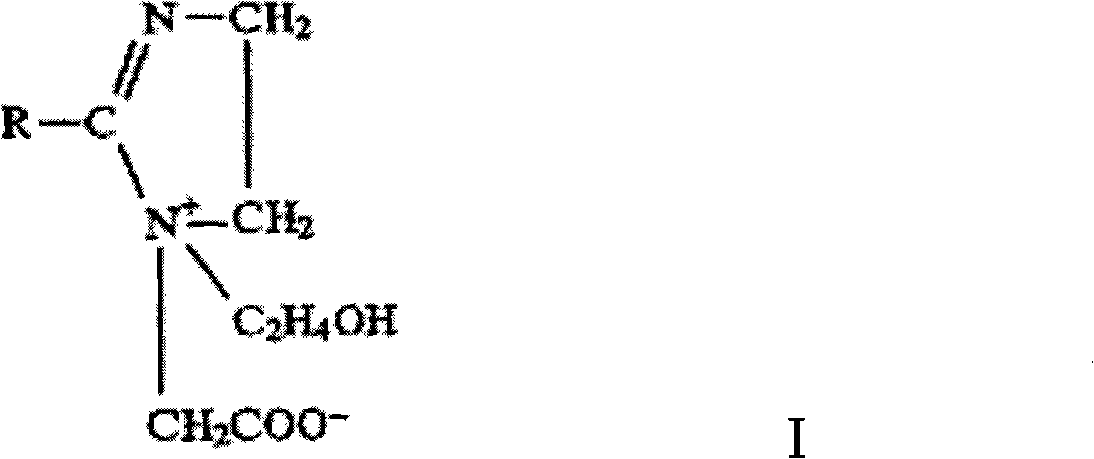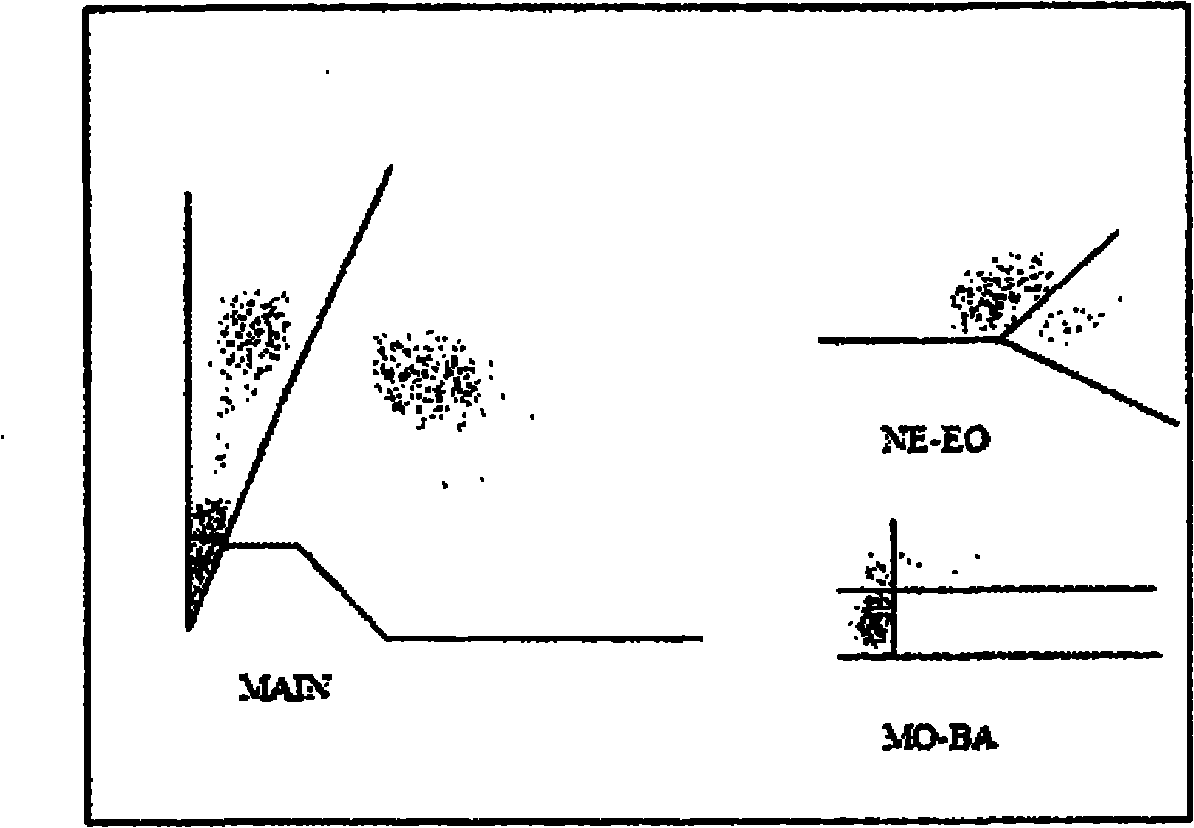Reagent for classifying leukocytes
A white blood cell and reagent technology, applied in the field of blood cell analysis, can solve the problems of narrow temperature range, easy to destroy white blood cells, inaccurate white blood cell classification, etc., and achieve the effect of accurate classification
- Summary
- Abstract
- Description
- Claims
- Application Information
AI Technical Summary
Problems solved by technology
Method used
Image
Examples
Embodiment 1
[0013] Reagents for sorting white blood cells, including a buffer and a hemolytic agent consisting of two betaine-type zwitterionic surfactants, lauryl betaine and hexadecyldimethyl betaine . The betaine-type zwitterionic surfactant has the structure shown in formula I, and the content range of hemolytic agent is 10.5g / L. The buffer is N-(2-acetamide)iminodiacetic acid. Using Nippon Kohden MEK7222K blood cell analyzer as the detection instrument, fresh healthy human whole blood samples were added to the blood cell analyzer, the pH value was controlled in the range of 1 to 10, and the temperature was 8°C. The test results are as follows: figure 1 shown.
[0014] from figure 1 It can be seen that Example 1 can accurately classify white blood cells into lymphocytes, monocytes, eosinophils, neutrophils and basophils.
PUM
 Login to View More
Login to View More Abstract
Description
Claims
Application Information
 Login to View More
Login to View More - R&D Engineer
- R&D Manager
- IP Professional
- Industry Leading Data Capabilities
- Powerful AI technology
- Patent DNA Extraction
Browse by: Latest US Patents, China's latest patents, Technical Efficacy Thesaurus, Application Domain, Technology Topic, Popular Technical Reports.
© 2024 PatSnap. All rights reserved.Legal|Privacy policy|Modern Slavery Act Transparency Statement|Sitemap|About US| Contact US: help@patsnap.com










